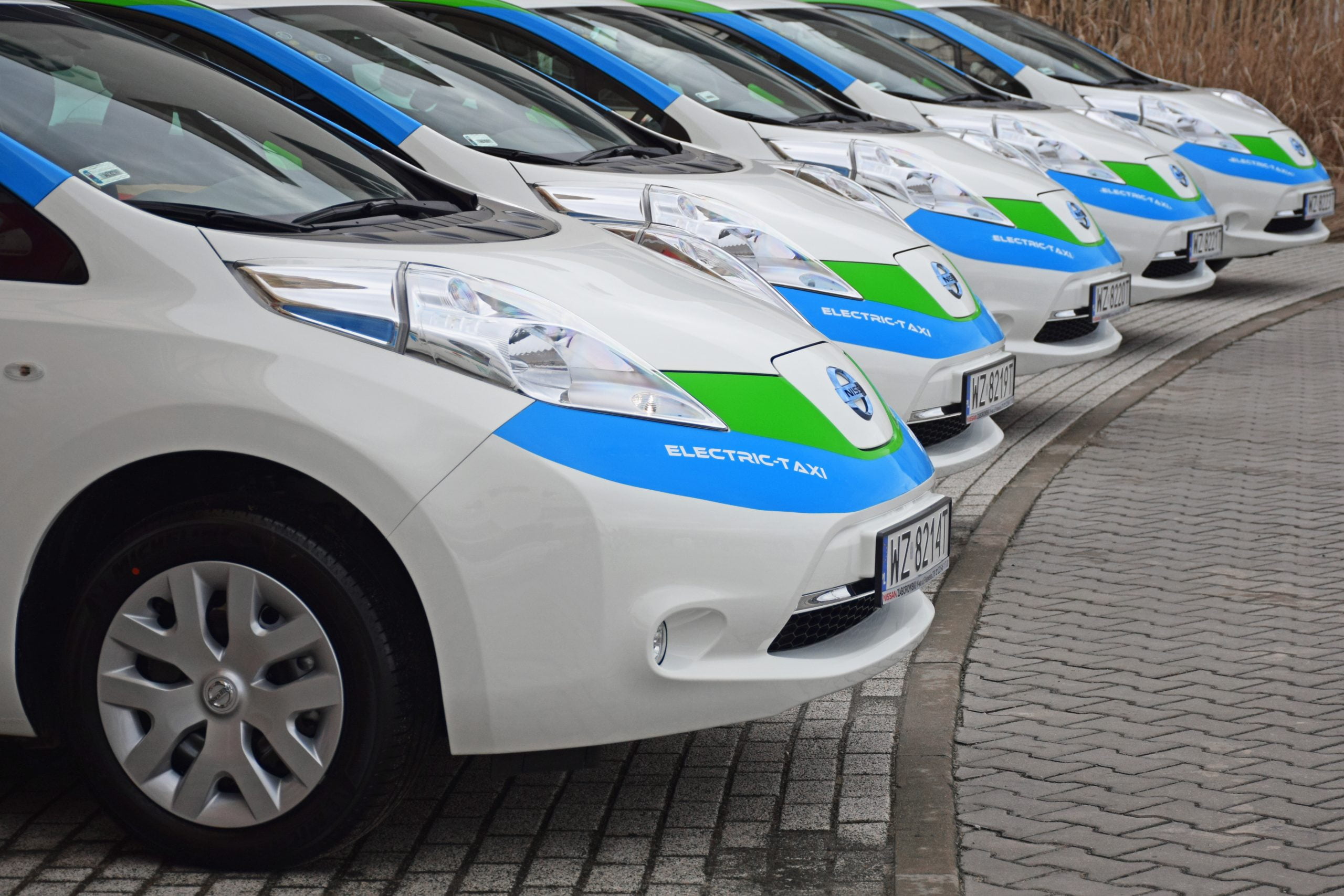To contribute to climate and air quality objectives, all participating parties aim to make it possible for consumer taxi transport to be fully ZE in the participating municipalities by 1 January 2025. Taxi transport consists of two market segments, namely the boarding market and the delivery market.
'Zero-Emission', abbreviated: ZE and also called emission-free, means that a vehicle has no polluting emissions at the exhaust. This is therefore calculated from the energy storage in the vehicle up to and including the drive (also known as Tank-to-Wheel). The first precondition was that there were sufficient suitable vehicles on the market, both passenger cars and vans. For passenger cars, the consensus among the parties is that this is already being met. For regular vans it is estimated that there are enough models on the way, but this does not apply to wheelchair vans. In addition, there must be sufficient charging infrastructure with sufficient grid connections and/or hydrogen refueling infrastructure to enable ZE taxi transport.
Some municipalities have the ZE Roadmap Consumer taxi signed with the drawing up of an Action Plan in consultation with KNV as part of this. Discussions about these action plans are currently taking place, with topics such as the date on which there must be completely emission-free taxis, the charging infrastructure, the use of public transport lanes by taxis and subsidy or tax options to promote the purchase of electric vehicles are discussed. A striking detail in the agreement made is that the parties have agreed that compliance with the Roadmap agreements is not legally enforceable. You can leave within three months.
"In mid-2022, the central government will evaluate the harmonization of the environmental zone policy. In that evaluation, the possibility of making the 'ZE zone' instrument possible for consumer taxi transport, so that the use of ZE vehicles could be enforced, will be explicitly examined."

The talks are taking place with The Hague, Rotterdam, Amsterdam, Utrecht, Amersfoort, Tilburg and Eindhoven. In addition, a discussion has also taken place with the municipality of 's-Hertogenbosch about a car-free city center and the location of taxiit's in there. The use of ZE vehicles for consumer taxi transport should be affordable compared to the common non-ZE alternative from a Total Cost of Ownership (TCO) perspective, taking into account different business types.
Organization and governance
Consumer taxi transport is understood to mean passenger transport by car or van against payment, not being public transport and not being contract transport. A steering group manages in outline. Two Municipalities, one Company, the national government and KNV take part in this steering group at director level. The national government fulfills the role of chairman and takes the initiative to set up the Steering Committee. The Steering Committee meets at least once a quarter. The Project Team consists of all Parties. They are responsible for providing input to the ZE Taxi Team, sharing knowledge and experience and contributing to research and development. They also test proposals from the ZE Taxi Team. In addition, they fulfill an ambassadorial role towards the sector. The ZE Taxi Team is formed by the national government, as the initiator in this phase. The national government can choose to call in external support and/or expertise for this.
The enforceability of zero emissions transport is an important aspect in the feasibility of the target. It is essential that this enforceability applies to both the boarding and delivery markets, i.e. the same requirements apply to both submarkets with regard to the use of ZE vehicles. This is necessary to prevent drivers from moving to another market segment when setting requirements for one market segment in order not to have to meet those requirements. The parties express the intention to make it possible from 1 January 2025 to make it mandatory to use ZE vehicles for consumer taxi transport for those municipalities that meet the aforementioned conditions. Such an obligation serves as the final element of the transition agreed in this roadmap. The decision-making process about the possible introduction of such an obligation, including the conditions.
Also read: Pitane Mobility is fully committed to mobile taxi software


